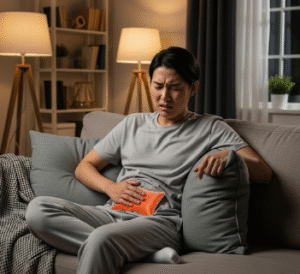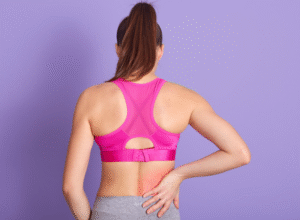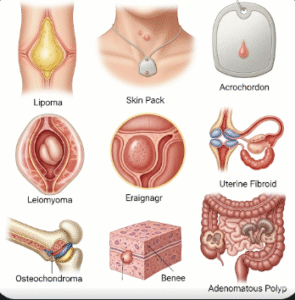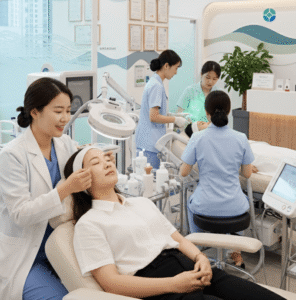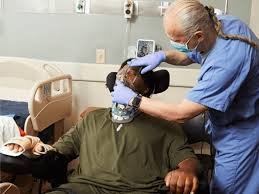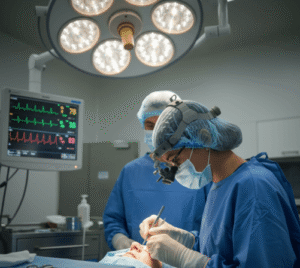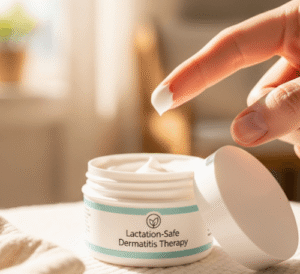What It Is
Liposuction revision is a corrective procedure that addresses irregularities, asymmetry, contour deformities, or uneven fat removal after a previous liposuction surgery. While liposuction is generally safe and effective, some patients may be left with lumps, dents, rippling, or uneven fat distribution.
In Korea, liposuction revision is performed by body contouring specialists who use advanced liposuction, fat grafting, laser-assisted devices, and scar revision techniques to restore smooth, natural-looking contours.
Why It’s Done
Patients undergo liposuction revision because:
- Their initial surgery left visible dents, bumps, or unevenness.
- They experience skin laxity, sagging, or rippling after aggressive fat removal.
- The results look unnatural due to asymmetry or irregular contours.
- They want to refine their figure with a more polished outcome.
Good candidates include:
- Patients dissatisfied with previous liposuction results.
- Those with enough donor fat available for grafting if needed.
- Individuals in good general health and at a stable weight.
Alternatives
- Non-surgical treatments (radiofrequency, ultrasound, or laser skin tightening): May improve mild irregularities.
- Fillers: Temporary correction for small depressions.
- No treatment: If irregularities are minor and not bothersome.
Preparation
Before liposuction revision in Korea, patients will:
- Undergo a full evaluation with physical exam and 3D body analysis.
- Review their previous surgery details, including areas treated and techniques used.
- Stop smoking and alcohol 2–4 weeks before surgery.
- Avoid blood-thinning medications and supplements.
How It’s Done
- Anesthesia: Local anesthesia with sedation or general anesthesia, depending on extent.
- Techniques may include:
- Corrective liposuction: Removing residual fat lumps for smoother contours.
- Fat grafting: Filling dents or depressions with purified fat for even volume.
- Skin tightening: Using radiofrequency, ultrasound, or laser-assisted devices for skin laxity.
- Scar revision: Correcting previous incision marks if visible.
- Duration: 1–4 hours depending on complexity.
Recovery
- First week: swelling, bruising, and soreness at treated areas.
- Compression garments are worn for 2–6 weeks to reduce swelling and support new contours.
- Most patients return to daily activities in 7–10 days; strenuous exercise is avoided for 4–6 weeks.
- Final results become visible within 2–3 months as swelling subsides.
Possible Complications
- Recurrence of contour irregularities.
- Over- or under-correction.
- Skin laxity if too much fat is removed.
- Infection or delayed healing.
- Rare risks: nerve changes, fibrosis, or prolonged swelling.
Treatment Options in Korea
Diagnosis
- 3D body scanning and photography to assess contour deformities.
- Ultrasound imaging if scar tissue or fibrosis is suspected.
Medical Treatments
- Non-surgical skin tightening (RF, ultrasound, laser) for mild irregularities.
- Massage and lymphatic drainage to reduce swelling and fibrosis.
Surgical or Advanced Therapies
- Corrective liposuction with advanced cannulas for precision.
- Fat grafting to smooth dents or uneven areas.
- Hybrid approach combining liposuction and grafting for balanced contouring.
- Laser-assisted or VASER liposuction to break up scar tissue and refine results.
Rehabilitation and Support
- Use of compression garments to guide healing and reduce swelling.
- Scar management therapies if new incisions are made.
- Multiple follow-up visits to monitor fat survival and contour stability.
- International patients benefit from Korea’s expertise in revision body contouring, advanced imaging, and natural aesthetic results.



